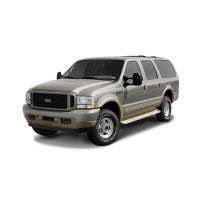
Do you have a question about the Ford 2004 Excursion and is the answer not in the manual?
| Brand | Ford |
|---|---|
| Model | 2004 Excursion |
| Category | Automobile |
| Language | English |
Warning regarding chemicals in engine exhaust and vehicle components known to cause cancer or birth defects.
Explanation of vehicle systems that collect and store diagnostic information about performance and status.
Glossary of symbols used on the vehicle to indicate various functions and warnings.
Information on how to reduce the risk of personal injury and damage using warning triangle symbols.
Guidelines for breaking in the vehicle during the first 1,600 km (1,000 miles) of driving.
Details on the New Vehicle Limited Warranty including emission coverage.
Explanation of warning lights and gauges that alert to vehicle conditions and potential repairs.
Description and function of various gauges on the instrument cluster.
Operation and features of the premium audio system with AM/FM, cassette, and single CD player.
Controls and operation for the premium in-dash six CD sound system.
Controls for rear seat passengers to operate the radio, tape, CD, or CD changer.
Information on radio frequencies, reception factors, player care, and system warranty.
Operation and tips for the heater-only climate control system.
Operation of the manual HVAC system including fan speed and air flow selections.
Controls and operation of the EATC system for automatic climate control.
Operation of auxiliary climate controls for front and rear seat passengers.
Operation of the rear window defroster control to clear fog and ice.
Operation of headlamp control for turning lamps on/off and parking lamps.
Features of the autolamp system for automatic exterior light control.
Operation of foglamp control in conjunction with headlamp control.
Activation and function of daytime running lamps with reduced output.
Activation and deactivation of high beam headlamps.
Adjustment of instrument panel brightness for headlamp and parklamp operation.
Operation of turn signals for left and right turns.
Operation of dome/map lamps and rear courtesy/reading lamps.
Specifications and procedures for replacing exterior and interior bulbs.
Operation of windshield wipers, washers, and rear window wiper/washer.
Procedure for adjusting the steering wheel to a desired position.
Operation of the Tow/Haul feature and overdrive cancel function.
Turning on and off the visor mirror lamps.
Description of overhead console features like storage bins and garage door opener installation.
Operation of power quarter rear windows, including safety precautions.
Information on power outlets designed for accessory plugs and their limitations.
Operation of power windows, including one-touch down and window lock features.
Features and operation of inside and outside rearview mirrors.
Description of turn signal indicators mounted on the side mirrors.
Illumination of clearance lamps when headlamps or parking lamps are on.
Manual folding of mirrors for narrow spaces or trailer towing.
Adjustment of accelerator and brake pedals when the vehicle is stopped.
Operation and setting of the vehicle's speed control system.
Controls on the steering wheel for operating radio and climate features.
Information provided by the trip computer about vehicle systems and status.
Features selectable via the trip computer, like English/metric display and mode control.
Estimation of driving distance with remaining fuel based on average fuel economy.
Displaying outside temperature in Centigrade or Fahrenheit.
Display of vehicle heading via the overhead console compass.
Procedure for determining and setting the magnetic zone for compass accuracy.
Procedure for calibrating the compass in an open area.
Convenient replacement for multiple hand-held transmitters to operate garage doors and other devices.
Instructions for programming the HomeLink Wireless Control System.
Special programming procedures for gate operators and Canadian residents.
Description of console features like utility compartments and cell phone use.
Securing lightweight objects in the cargo area using a cargo net.
Instructions for opening and closing the TriDoors for cargo storage.
Information on the luggage rack, including load limits and adjustment procedures.
Information on vehicle keys, including loss and replacement.
Operation of power door locks to unlock or lock all doors.
Feature preventing lockout when the key is in the ignition.
Operation of childproof locks on rear doors to prevent interior opening.
Features of the remote entry system for unlocking, locking, and personal alarm activation.
Conditions under which the power door lock UNLOCK feature is disabled from inside.
Procedure for replacing the battery in the remote entry transmitter.
Information on reprogramming or replacing lost remote entry transmitters.
Step-by-step instructions for reprogramming remote entry transmitters.
Detailed steps to reprogram remote entry transmitters to the vehicle.
How interior lamps illuminate when the remote entry system is used to unlock doors.
Using the keyless entry keypad to lock/unlock doors and activate features.
Procedure to erase the personal entry code and revert to the factory set code.
Using the keypad to unlock driver's door or all doors.
Automatic vehicle door locking feature and its conditions.
Steps to deactivate or reactivate the autolock feature via the keypad.
Steps to deactivate or reactivate the autolock feature using the power door unlock control.
Explanation of the engine immobilization system and its theft indicator.
How the Securilock system automatically arms when the ignition is turned off.
How the Securilock system disarms when the ignition is turned on with a coded key.
Procedure for obtaining replacement keys if original keys are lost or stolen.
Instructions for programming your own coded keys to the vehicle.
Adjustments and features for vehicle seats, including notes on safety.
Operation of the 40/20/40 split seat, including track release and latching.
Adjustment and reclining of the 60/40 split bench seat.
Operation of captain's chairs, including forward/rearward movement and reclining.
System for automatic positioning of driver seat and adjustable pedals to programmable positions.
Adjusting the manual lumbar support control for comfort.
Controls for adjusting the front power seat cushion and position.
Operation of heated seats, including activation and deactivation.
Operation of the front seat armrest and access to the storage compartment.
Information and procedures related to rear seats, including head restraints and folding.
Procedure for reclining the second row seatback for adjustment.
Features of the third row seat, including access and removal.
General precautions and guidelines for using safety restraints.
Proper use of combination lap and shoulder belts, including locking modes.
Conditions and guidance for using the automatic locking mode of the safety belt.
Seat belt system feature to reduce injury risk in head-on collisions.
Adjusting shoulder belt height for proper positioning across the shoulder.
Proper adjustment and fastening of lap belts.
Function of the safety belt warning light and chime to remind occupants to fasten belts.
Supplemental warning feature to remind the driver to buckle the safety belt.
Procedure to deactivate or activate the BeltMinder feature.
Information on obtaining and using a safety belt extension assembly.
Periodic inspection and maintenance of safety belt systems.
Precautions and operation of the air bag supplemental restraint system.
Safety precautions for children regarding air bag deployment.
Explanation of how the air bag SRS activates based on vehicle deceleration.
Legal requirements and precautions for using safety restraints for children.
Guidelines for restraining children using safety belts based on size.
Benefits and usage of child booster seats for proper belt fit.
Description of backless and high-back booster seat types.
Proper selection and installation of child safety seats.
Procedure for installing child seats using vehicle's combination lap and shoulder belts.
Instructions for attaching child safety seats using tether straps and anchors.
Ignition positions and procedures for starting the vehicle.
Information on brake system operation, ABS, and warning lights.
Procedure for setting and releasing the parking brake.
Tips to prevent damage to the power steering system and check for steering issues.
Function of the Traction-Lok axle for added traction on slippery surfaces.
General preparation and precautions before driving the vehicle.
Operation of the automatic transmission, including brake-shift interlock.
Description of gearshift positions P, R, N, D, and Drive for the 4-speed automatic transmission.
Description of shift positions P, R, D, 2, 1, and forced downshifts for the 5-speed automatic transmission.
Procedure for rocking the vehicle out of mud or snow.
Operation and limitations of the reverse sensing system for obstacle detection.
Operation of the 4WD system, including ESOF and shift positions.
Guidelines for driving off-road, highlighting differences from conventional vehicles.
Fundamental principles for driving in rough terrain and adverse conditions.
Steps to take if the vehicle goes off the pavement, prioritizing safety.
Parking procedures, especially for 4WD vehicles with transfer case in Neutral.
Explanation of how 4WD systems increase traction for various conditions.
Guidelines for driving in sand, emphasizing steady acceleration and avoiding spinning.
Precautions for driving through mud and water, including potential damage.
Techniques for driving on hills and slopes, emphasizing straight-line movement.
Guidelines for driving safely on snowy or icy roads, including skid control.
Requirements for replacing tires and wheels to maintain safety and performance.
Driving habits that contribute to tire mileage and safety.
Recommendations regarding vehicle maintenance and the impact of modifications.
Guidance on proper vehicle and trailer loading to maintain design rating capability.
Definition of maximum allowable weight for a fully loaded vehicle.
Definition of loaded vehicle weight plus loaded trailer weight.
The highest possible weight of a fully loaded trailer the vehicle can tow.
Specific loading instructions for trucks and utility vehicles regarding handling.
Information on towing conventional/Class IV trailers based on engine and axle ratio.
Using proper equipment and ensuring correct attachment for towing a trailer.
Procedure for hooking up a trailer using a load equalizing hitch.
Information on trailer brake systems and compliance with regulations.
Precautions and tips for driving the vehicle while towing a trailer.
Guidelines for recreational towing to ensure transmission is not damaged.
Information on Ford's complimentary roadside assistance program.
How to use the roadside assistance identification card for quick reference.
Operation of hazard flashers to warn other motorists when the vehicle is disabled.
Location and function of the fuel pump shut-off switch.
Information on fuses, including how to identify blown fuses and replacement guidelines.
Location and access instructions for the passenger compartment fuse panel.
Procedure for changing a flat tire, including safety precautions.
Information regarding the spare tire and its usage, especially for 4WD vehicles.
Locations where the spare tire and necessary tools are stowed.
Step-by-step procedure for changing a tire, including safety measures.
Recommended torque specifications for wheel lug nuts after disturbance.
Safety precautions and procedures for jump starting a vehicle.
Step-by-step guide for connecting jumper cables between vehicles.
Procedure for starting the engine of a disabled vehicle using jumper cables.
Procedure for safely removing jumper cables after jump starting.
Guidelines for towing the vehicle using a wrecker, including correct procedures.
Information on obtaining warranty repairs and service at Ford dealerships.
Details on purchasing extended service plans for additional vehicle protection.
Information about the dispute settlement board for warranty disputes.
Types of warranty repair or performance concerns eligible for review by the Board.
Information required for case review by the Dispute Settlement Board.
Information on Canada's mediation/arbitration program for resolving service concerns.
Guidance for obtaining service and information when traveling internationally.
California specific regulations regarding vehicle repair and repurchase rights.
Procedure for reporting safety defects to NHTSA and Ford Motor Company.
Guidelines for washing the vehicle exterior, including recommended products and techniques.
Procedure for applying paint sealant to reduce scratches and protect paint.
Procedure for repairing paint chips using touch-up paint.
Cleaning and maintenance of aluminum wheels and wheel covers.
Importance of engine cleanliness for efficiency and performance.
Cleaning procedures for non-painted exterior plastic parts.
Tips for cleaning vehicle glass and wiper blades for optimal performance.
Cleaning instructions for the instrument panel and cluster lens.
Cleaning procedures for interior trim areas.
Cleaning recommendations for fabric, carpets, cloth seats, and safety belts.
Cleaning and maintenance of leather seating surfaces.
Procedure for flushing the vehicle's underside and keeping drain holes clear.
List of recommended cleaning and protection products for Ford vehicles.
Overview of service recommendations, including DIY items and scheduled maintenance.
Safety precautions to follow when working on the vehicle.
Procedure for opening the vehicle's hood.
Identification of components located in the engine compartment.
Checking and adding windshield washer fluid.
Procedures for checking and adding engine oil.
Instructions for adding engine oil, including recommended types and quantities.
Recommendations for engine oil type, viscosity, and filter selection.
Information on the maintenance-free battery, checking electrolyte, and installation.
How the transmission relearns its shift strategy after battery disconnection.
Procedures for checking engine coolant concentration and level.
Instructions for adding engine coolant, including mixture and safety precautions.
Information on coolant refill capacity and usage in different climates.
Explanation of the fail-safe cooling feature and its operation during overheating.
Safety precautions and information regarding automotive fuels.
Operation of the fuel filler cap and importance of correct installation.
Recommendations for selecting the correct fuel and avoiding problematic additives.
Recommended octane rating for unleaded gasoline and engine knocking.
Troubleshooting fuel quality issues affecting vehicle performance.
Techniques for measuring and improving fuel economy.
Procedure for filling the fuel tank accurately and consistently.
Methods for calculating fuel economy based on odometer and fuel fill-up records.
Driving habits that can improve fuel economy and vehicle performance.
Driving habits that affect fuel economy, such as smooth operation and speed.
Maintenance practices that affect fuel economy, like tire inflation and alignment.
Factors like vehicle loading and towing that can affect fuel economy.
Information on the EPA window sticker for fuel economy comparisons.
Components and maintenance of the emission control system for compliance.
Explanation of the OBD-II system for monitoring engine emissions.
Procedure to ready the on-board diagnostics system for I/M testing.
Procedure for checking and adding power steering fluid.
Information about the brake fluid level and its relation to brake wear.
Procedure for checking automatic transmission fluid level.
Instructions for adjusting automatic transmission fluid levels.
Procedure for replacing the automatic transmission fluid filter.
Procedure for checking and adding transfer case fluid.
Information on air filter maintenance and replacement intervals.
Step-by-step instructions for changing the air filter element.
Explanation of Uniform Tire Quality Grading system (Treadwear, Traction, Temperature).
Definition and comparison of tire treadwear grades.
Explanation of tire traction grades (AA, A, B, C) for stopping on wet pavement.
Explanation of tire temperature grades (A, B, C) for heat resistance.
Information on maximum tire inflation pressure and its relation to load carrying capacity.
General information on tire maintenance for optimal service life.
Definitions of common tire terms and sidewall information.
Explanation of tire sidewall information, including size, load index, and speed rating.
Details on tire designation, size, aspect ratio, and type for "P" type tires.
Explanation of the DOT Tire Identification Number format and its components.
Additional tire information specific to "LT" type tires.
Inspection and measurement of tire tread wear and signs of damage.
Requirements for replacement tires and wheels to ensure safety and performance.
Driving habits that affect tire mileage and safety.
Guidelines for using snow tires and chains for traction in winter conditions.
List of Motorcraft part numbers for common maintenance items.
Capacities for various vehicle fluids, including axle, brake, coolant, and oil.
Specifications for various lubricants used in the vehicle's systems.
Specifications for engine data, including cubic inches, fuel, firing order, and compression ratio.
Dimensions of the Excursion model, including length, width, height, wheelbase, and track.
Information on locating and understanding the vehicle's certification label.
Explanation of the vehicle identification number (VIN) components.
Location of the engine number on the engine block, transmission, and transfer case.
Table of codes representing different transmission/transaxle types.
Table of transmission/transaxle codes specific to passenger car applications.
Overview of genuine Ford accessories, their quality, and warranty coverage.
List of exterior style accessories available for the vehicle.
List of interior style accessories such as cell phone holders and floor mats.
List of lifestyle accessories including bike racks and towing mirrors.
List of accessories for peace of mind, such as airbag anti-theft locks and first aid kits.
Information to consider when adding accessories to maintain vehicle performance.


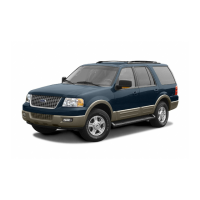

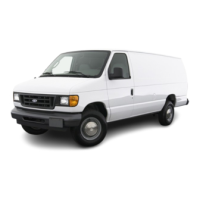
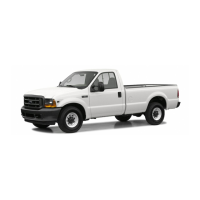
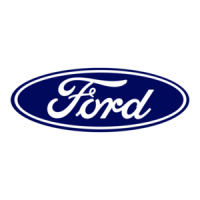


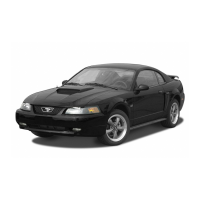
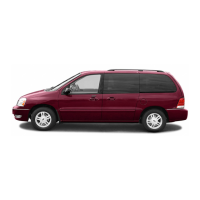
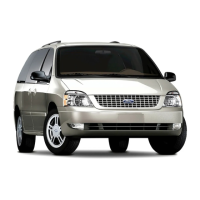
